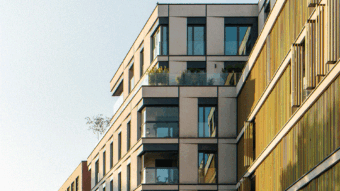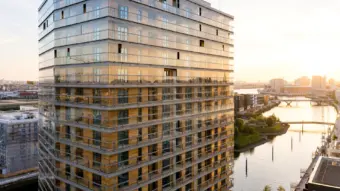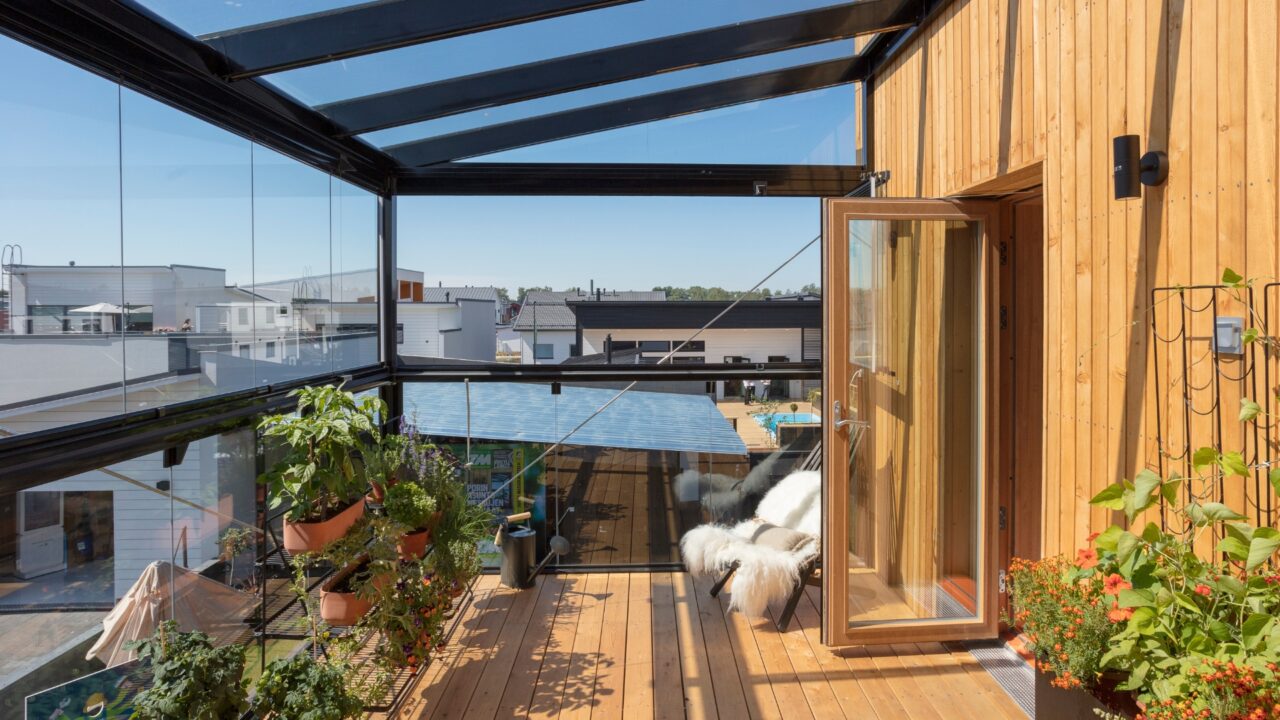
What is the difference between thermal 4-season terrace glazing and 3-season glazing?
As outdoor living spaces become increasingly popular, homeowners are investing in terrace glazing to extend the usability of their outdoor areas throughout the year. Among the options available, two stand out: thermal 4-season terrace glazing and 3-season glazing. Discover the main differences between three- and four-season rooms, and why a 3-season room might just be the right solution to choose.
What is the difference between thermal 4-season terrace glazing and 3-season glazing?
As outdoor living spaces become increasingly popular, homeowners are investing in terrace glazing to extend the usability of their outdoor areas throughout the year. Among the options available, two stand out: thermal 4-season terrace glazing and 3-season glazing. Discover the main differences between three- and four-season rooms, and why a 3-season room might just be the right solution to choose.
3-season frameless terrace glazing offers a hassle-free outdoor space with an unobstructed view
3-season glazing, as the name suggests, is designed to be used during three seasons of the year, typically excluding the coldest months. They offer a balance between providing shelter from elements like insects, dust, pollen, etc., and maintaining a connection with the outdoors. With simpler structure and fewer insulation features, 3-season glazing often comes with a more affordable price tag compared to their 4-season counterparts. Additionally, frameless glazing provides a seamless outdoor area with a clear, unobstructed view.
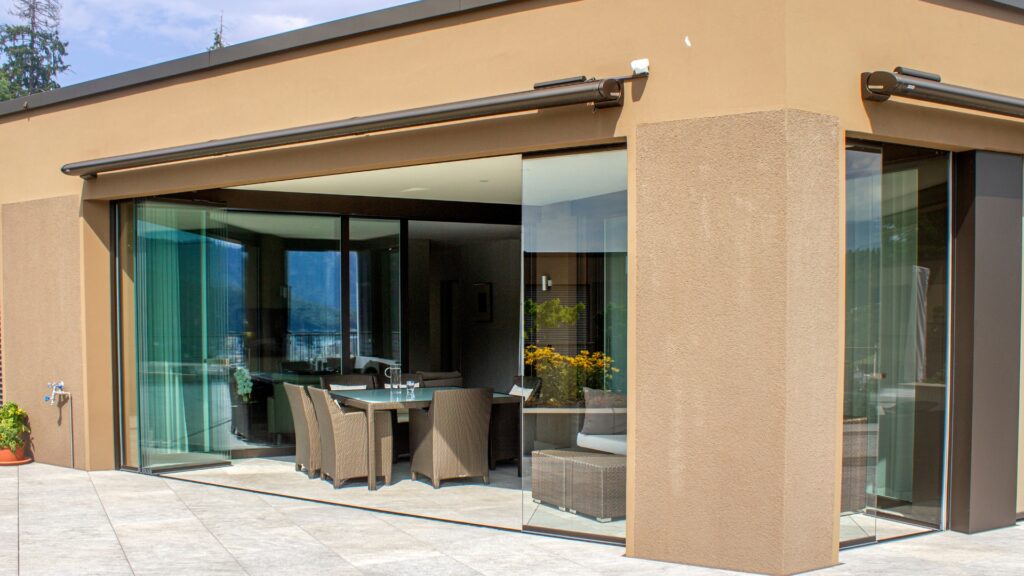
While not suitable for extreme temperatures, 3-season glazing still extends the usability of your terrace for most of the year, allowing you to enjoy outdoor living earlier in the spring, summer, and later in the fall. And during the coldest months glazing protects the furniture and ensures that no large piles of snow accumulate on the terrace.
3-season solution does not automatically mean the room cannot be put to good use in the winter season, though. It merely means that the glass panels are not insulated, and actually, that this type of solution has many benefits over a 4-season room. 3-season glazing often relies on simpler ventilation solutions, allowing better airflow and comfort during mild weather. Technical studies that have been done on Lumon glazing prove that they allow ventilation in the room, ensuring sufficient airflow in the space and the building structures behind it.
Thanks to their straightforward construction, 3-season glazing typically requires less maintenance compared to thermal options, making them a convenient choice for homeowners seeking a hassle-free outdoor space. It is also a more sustainable choice with its light structure consisting of glass and aluminium only.
There are some downsides to 4-season glazing
Thermal 4-season terrace glazing is designed to provide insulation and climate control, allowing you to enjoy your terrace even during the coldest months of the year. This kind of glazing is typically made of double or triple-pane glass with low-emissivity coatings, which minimize heat transfer and prevent energy loss. The profile system should preferably be thermally tempered. High-quality insulation glass, seals, thermally tempered profiles, and a well-insulated floor and roof are needed to make it a thermal solution. Additionally, 4-season sunrooms often feature advanced sealing systems to ensure maximum efficiency in maintaining indoor temperatures. This means that there will always be vertical frames, so the view won’t be “open” and unobstructed.
4-season solutions may also cause troubles in the building structures with insufficient ventilation and tightly sealed glazing
However, the cost of thermal 4-season glazing is often higher compared to 3-season glazing, as thermal 4-season options typically come with a higher upfront investment due to their advanced insulation features and materials. The potential maintenance requirements are also often more demanding with more insulated solutions. While modern designs aim to minimize maintenance needs, some thermal glazing may require periodic inspections and upkeep to ensure optimal performance over time. 4-season spaces may also require additional permitting.
Although it may seem that a 4-season room can be ‘better used’, considering the added insulated and sealed space, some of its technical elements may serve as a disadvantage. Without proper ventilation mechanisms, 4-season rooms can become uncomfortably hot during the summer months, requiring additional cooling solutions, as it is not possible to open glass panels “completely”. 4-season solutions may also cause troubles in the building structures with insufficient ventilation and tightly sealed glazing, unless the solution is properly acknowledged in the building phase.
Lumon’s 3-season terrace glazing solution has minimal framing and a sleek style
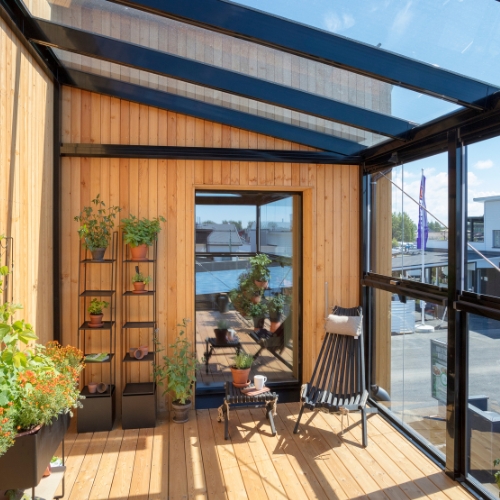
In the realm of terrace glazing solutions, the debate between three and four seasons is often a matter of preference and practicality. While thermal 4-season options promise year-round comfort, they come with their own set of considerations and costs. However, for those seeking a seamless blend of indoor-outdoor living without compromising on style or functionality, Lumon Glazing emerges as a compelling choice.
Lumon Glazing solutions are designed for 3-season use. Lumon’s retractable glazing is completely seamless, and sliding systems have minimal framing and a sleek style. Most 4-season sunrooms obstruct the view from the home to some extent. The design of Lumon’s systems offers a sleek and modern aesthetic that seamlessly integrates with outdoor spaces, inspired by classy and minimalist Scandinavian design.
With its emphasis on simplicity, ventilation, and sustainability, Lumon Glazing redefines the outdoor experience, allowing you to enjoy your terrace throughout spring, summer, and fall while effortlessly adapting to changing weather conditions. Lumon Glazing can easily be opened when it starts getting too hot and closed back up in chillier or rainy weather.
Moreover, Lumon’s design ethos, inspired by Scandinavian minimalism, ensures that outdoor space remains a stylish and inviting retreat, free from the bulky frames and obstructed views often associated with traditional terrace glazing. With added blinds, the functionality and comfort of 3-season spaces is then elevated to yet another level.
-
[NEWS] Lumon publishes Annual Review: Strengthening the foundation for the future
Read more…Lumon Group has published its Annual Review 2024, showcasing a year marked by resilience, strategic investments, and a strong commitment to sustainability.
-
[NEWS] Glazed balconies on the rise in Poland: Lumon strengthens presence with standout residential projects
Read more…Balcony glazing is fast becoming a hallmark of modern Polish residential architecture. Two years after establishing its subsidiary in Poland, Lumon – a global leader in frameless balcony glazing solutions – has successfully completed several high-profile residential projects, transforming urban living in cities like Warsaw, Łódź, and Pruszków.
-
Wooden buildings and glazed balconies: A perfect blend of design and sustainability
Read more…The architectural landscape is evolving, with sustainability and innovative design at the forefront. Wooden buildings, coupled with glazed balconies, offer a unique blend of natural materials and modern aesthetics. For the construction industry, this combination presents an exciting opportunity to create stylish, energy-efficient spaces that meet the growing demand for sustainable building solutions.

